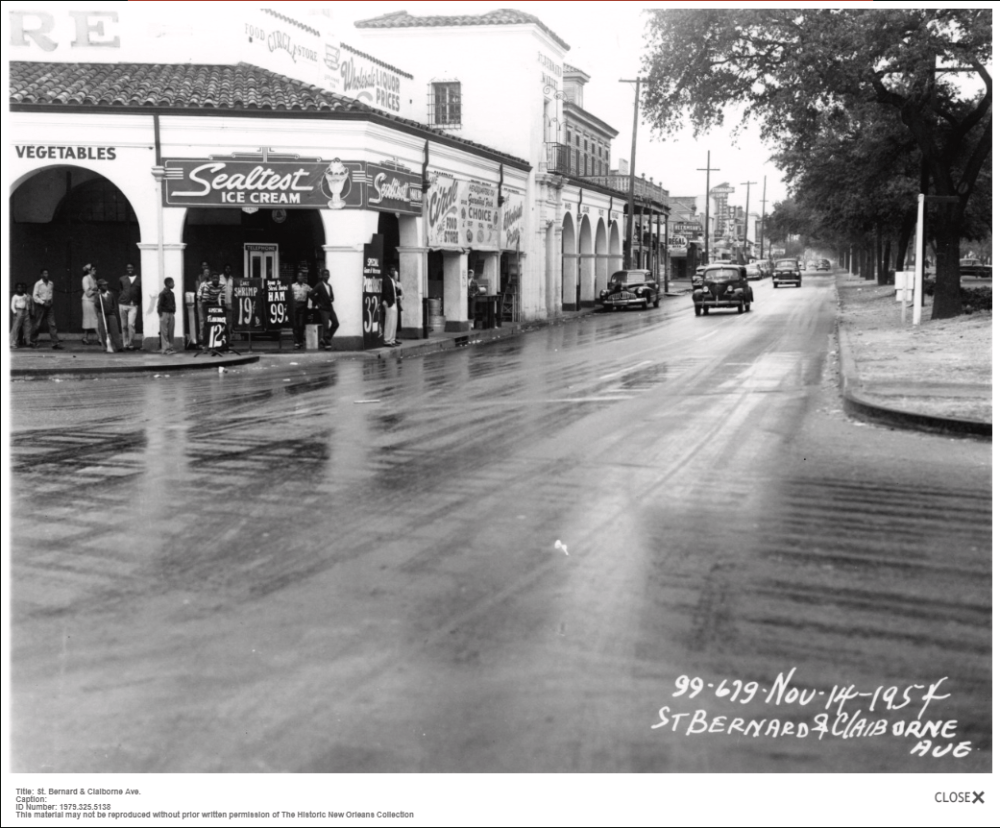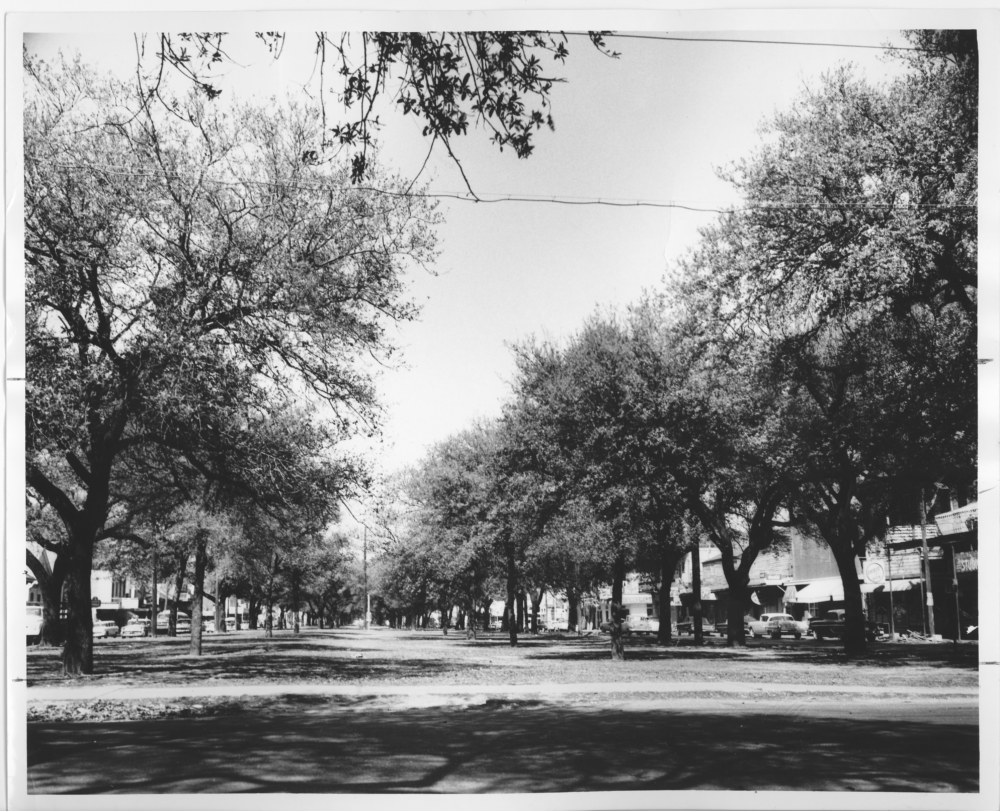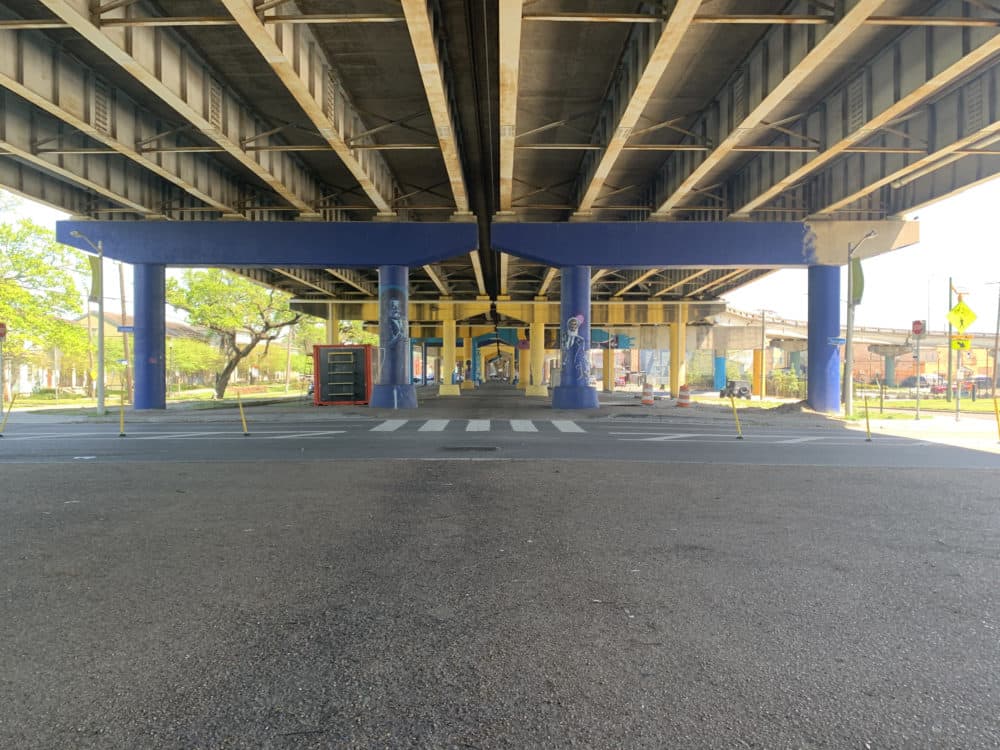Advertisement
How A Black Neighborhood In New Orleans Fits Into Biden's Plan To Fix Urban Design Inequities

New Orleans residents living in the shadow of “the monster” could get some relief from President Biden's infrastructure plan.
That’s one name for an elevated expressway in New Orleans that the White House calls a prime example of how transportation projects have exacerbated historic inequities in cities across the country.
Biden’s plan calls for a $20 billion fund to “reconnect” urban neighborhoods blighted by interstate highways that were planned without consideration for the people living along these routes. If it becomes a reality, the fund could spur reinvestment in communities that have been overlooked for decades.
Many of the neighborhoods are predominantly Black. That’s the case in New Orleans’ Tremé, where in 1968 an elevated extension of Interstate 10 erased a vibrant business corridor along Claiborne Avenue.
Amy Stelly can see — and smell — the expressway from her balcony.
“It’s ugly and it’s dirty,” she says. “My home vibrates from heavy truck traffic on the highway.”
It bothered her so much that Stelly, a designer and board member of New Orleans’ Urban Conservancy, co-founded the Claiborne Avenue Alliance, a group dedicated to removing the expressway. Their website describes the overpass as a “monument to racism.”
Stelly says the expressway is also an environmental hazard.
“When we have torrential rains here, the water just comes off of the highway in sheets and that water is very hot and dirty,” she says. “The interstate has not been maintained. The waterproofing is gone and the dirty water comes through the deck, so you can get rained on as you walk under ‘the bridge,’ as we love to call it. So it's a real menace.”
Before it was bulldozed to make way for the expressway, North Claiborne Avenue was a boulevard lined with live oak trees and azalea bushes.
Advertisement
“I was a very young child when the interstate was rammed through the neighborhood,” Stelly says. “There are people who are older than me who have very fond memories of the vibrancy of the neighborhood. It was the commercial center for Black New Orleans, and it was our commercial center at a time when Black people could not shop on Canal Street because New Orleans, like the rest of the South, was segregated. So Claiborne was the place to go.”


People played football and baseball in the open spaces along the boulevard, and Mardis Gras parades ended with celebrations on Claiborne. The day after Mardi Gras in 1968, however, Stelly says demolition began.
“It was a real stab to the heart of the Black community to have our homeland, really, and our open space … taken away after a day of joy and revelry,” she says. “It’s a painful memory.”
The expressway’s construction was part of a pattern of disinvestment in the neighborhood that continues to impact residents today.
“Tremé is a poster child to show you what disinvestment looks like when these highways go through. We have lost valuable historic building stock,” Stelly says. “The highway destroyed a lot, the businesses moved out. We have a lot of vacant lots, a lot of abandoned structures.”
Stelly and other local activists have struggled to gain traction for their campaign for years. So when the White House singled out the Claiborne Expressway as part of its infrastructure plan, she felt elated.
“I was floored,” she says, laughing. “One, that my work has been recognized because I have been very vocal about the removal of the highway, but more importantly, very happy that the Biden administration is now sensitive to the inequity that this has caused in many, many Black communities around the nation.”

Biden’s plan also mentioned Interstate 81 in Syracuse, New York — another infamous example of what University of Virginia historian Peter Norton has called the “horrific legacy” of the 1956 Federal Aid Highway Act.
The White House says it will “ensure new projects increase opportunity, advance racial equity and environmental justice, and promote affordable access.”
But a 2014 study on removing the Claiborne Expressway hit roadblocks when renderings of the transformed neighborhood sparked fears that it would encourage gentrification.
Stelly, who co-founded the Claiborne Avenue Alliance in 2017, says it’s possible to reinvest in the neighborhood without losing its character or pushing out longtime residents.
“When we talk about gentrification, we have to understand that it has a history in this neighborhood that has very little to do with that highway,” she says, pointing instead to post-Hurricane Katrina demographic trends and the recent boom in short-term rentals. “In terms of restoring the neighborhood, if we do it through a lens of equity, I believe that people who are here can stay here and people who were born and raised here will be able to return.”
Stelly is the third generation of her family to live in her house. She’s confident that she won’t be the last.
“I intend to stay here and pass it on,” she says.
If her efforts are successful, she might be able to pass on a property that no longer overlooks the expressway.
Chris Bentley produced and edited this interview for broadcast with Todd Mundt. Bentley also adapted it for the web.
This segment aired on April 2, 2021.

